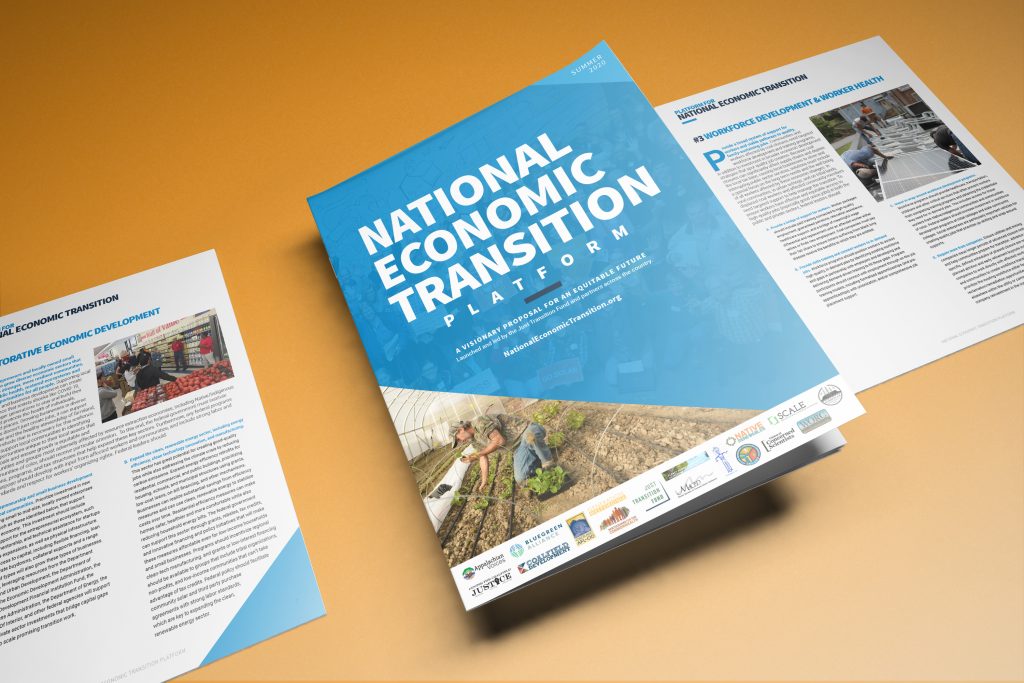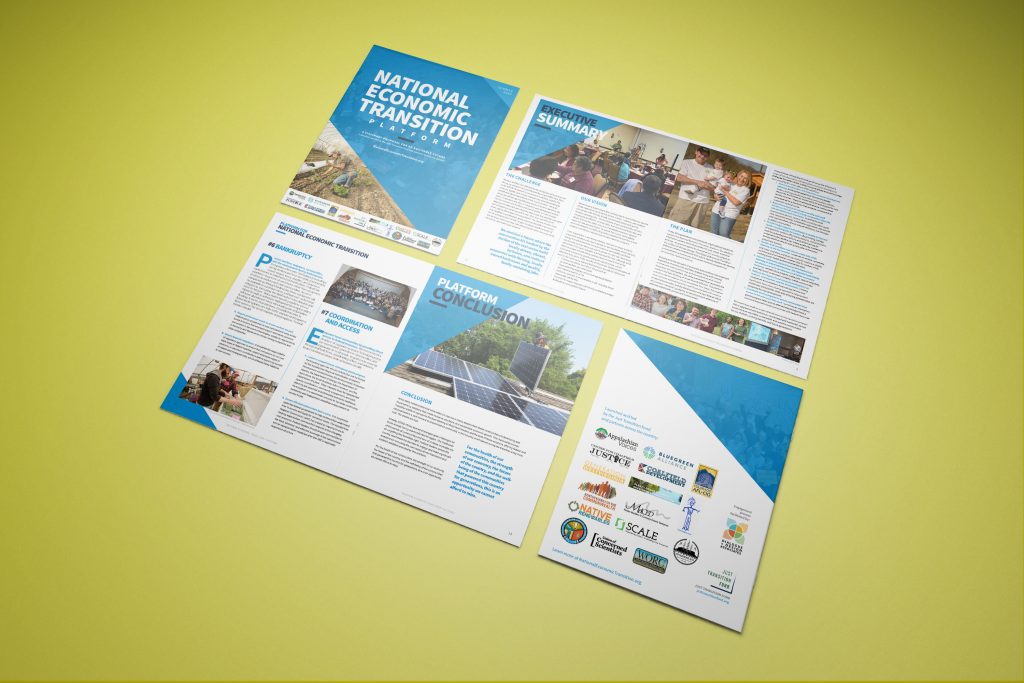Introducing the National Economic Transition Platform

For the people and places that relied on a coal economy for generations, the stakes are high from Appalachia to Navajo Nation. Many coal communities have faced decades of economic decline, the loss of jobs, and inequality and poverty. Some haven’t recovered from the Great Recession or were never on equal footing to begin with, and now struggle with decaying infrastructure, inadequate healthcare access, and the opioid epidemic. The steady decline of the coal sector and the closure of coal facilities that served in so many places as the largest employer and largest contributor to the tax base that supports public services, local education, and the health care systems layers one crisis onto several others. Communities of color and low-income communities already disproportionately left behind by the status quo multiply see resources, services and opportunities dwindling further.
And that’s all before COVID-19 and economic decline, which threatens to throw the coal sector into a tailspin by hammering local services and accelerating the closure of even more coal facilities without giving communities time to adequately plan.
The people and places that powered our country for generations deserve better. The challenges are real and urgent. But, there is hope. One of the untold stories about the communities that once relied on the coal economy is that leaders, organizations, and everyday people in these places are creating and deploying solutions that work. Workers are being retrained for the jobs of tomorrow in renewable energy, the tech sector, tourism, and beyond. Tribal communities that rarely collaborate are joining together to plan regional economic development efforts. Sustainable agriculture, forestry, and regional food markets are creating jobs. Local organizations led by people of color, young people, and women are stepping up and taking the lead.
The solutions that can create resilient communities with inclusive, equitable, and sustainable economies are already out there. Now, it is time to bring them to scale across the country.
Since 2015, the Just Transition Fund has been working with partners and allies to identify and try to scale these solutions. We saw common needs across regions and an opportunity to bring together leaders from different regions, representing different interests because we knew how powerful such a collaboration would be. And we know, collectively, we need an ambitious and visionary federal program as a start to solve these problems.
 Recognizing that, the Just Transition Fund launched the National Economic Transition project in early 2019. Local, tribal, labor, and community leaders living and working in America’s coal communities came together during a year-long coordination process to bring their ideas to the table, listen to each other, and determine the best path forward to scale the best solutions up. With the facilitation of Dialogue + Design Associates, a community engagement and design firm, a diverse planning team of representatives from coal communities across the country met in person, met online, and brought in stakeholders from Appalachia, the Midwest, and the West. We hosted a digital engagement campaign to get input from the broader public and held in-depth interviews with community leaders and people in coal-impacted places. Throughout this extensive process, our goal was clear: developing a framework for a national transition program that we could use to show national policymakers how to secure inclusive and equitable economic growth in the places that once relied on coal by letting those communities themselves drive the change.
Recognizing that, the Just Transition Fund launched the National Economic Transition project in early 2019. Local, tribal, labor, and community leaders living and working in America’s coal communities came together during a year-long coordination process to bring their ideas to the table, listen to each other, and determine the best path forward to scale the best solutions up. With the facilitation of Dialogue + Design Associates, a community engagement and design firm, a diverse planning team of representatives from coal communities across the country met in person, met online, and brought in stakeholders from Appalachia, the Midwest, and the West. We hosted a digital engagement campaign to get input from the broader public and held in-depth interviews with community leaders and people in coal-impacted places. Throughout this extensive process, our goal was clear: developing a framework for a national transition program that we could use to show national policymakers how to secure inclusive and equitable economic growth in the places that once relied on coal by letting those communities themselves drive the change. We are proud to announce that we are ready to share our work today as we unveil the National Economic Transition platform. This platform — supported by 80 organizations and leaders — shows federal and national policymakers the clear path forward with which they can develop the community-powered national transition program that our communities need and deserve.
Our platform is built on seven pillars of policy recommendations that, together, will create vibrant, livable, inclusive places and communities. They include:
- Investments in supporting local leaders and organizations to lead the transition — especially Black, brown, women, and indigenous-led organizations
- Support for local small businesses and entrepreneurship
- A bridge for impacted workers to quality, family-sustaining jobs
- The reclamation and remediation of coal sites
- Significant infrastructure improvements
- An effort to hold coal companies accountable through bankruptcies and
- The creation of entities to coordinate the transition program and get communities the resources they need.
This platform and those who created it envision a future where the communities hit hard by the decline of the coal industry have vibrant, resilient, and equitable economies with thriving, local businesses and quality, family-sustaining jobs. This future sees workers and communities on the frontlines of our nation’s energy transition becoming more prosperous through innovative solutions that tackle economic challenges and the climate crisis. And it ensures that low-income communities and communities of color that have been left behind aren’t just included, but help lead the way.
For the health of our communities, the strength of our economy, the future of the country, and the well-being of the communities that powered this country for generations, this is an opportunity we cannot afford to miss.